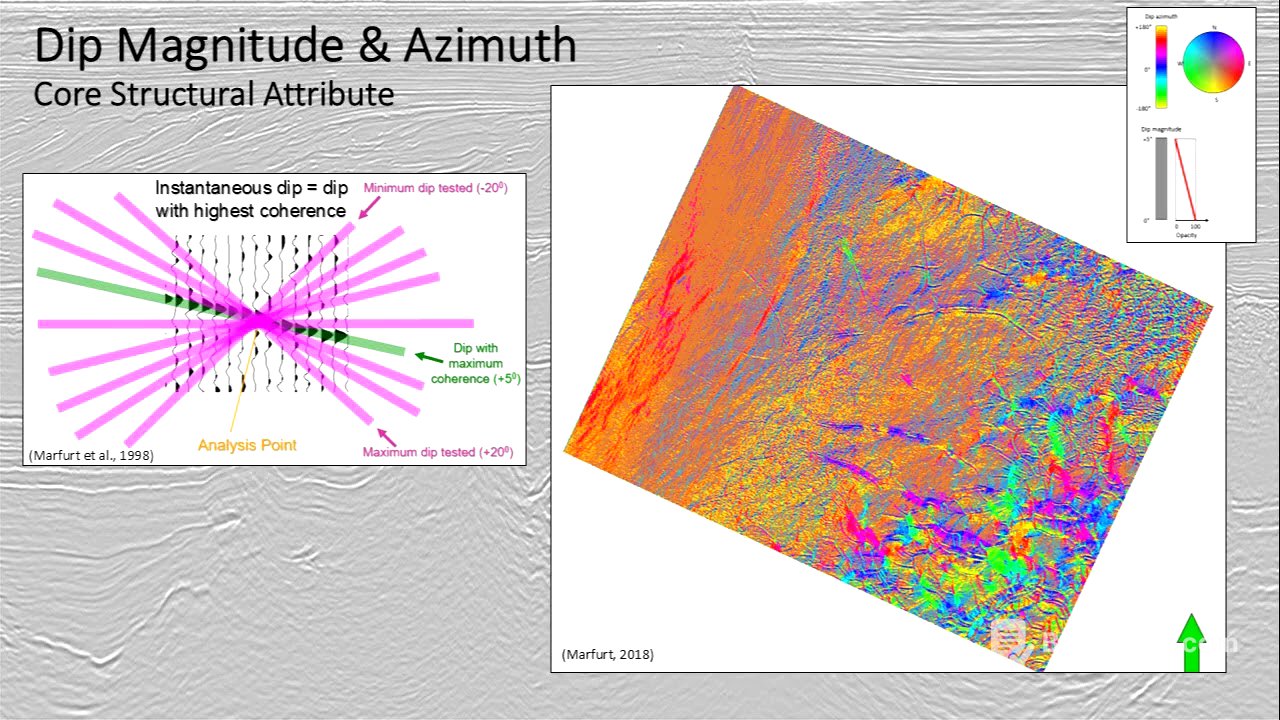TLDR;
This video provides an overview of seismic attributes and their application in fault identification and analysis. It highlights the importance of data conditioning and discusses key attributes such as dip magnitude, azimuth, coherence, curvature, and a bareny. The video also touches on the benefits of using multi-spectral coherence to enhance fault imaging.
- Data conditioning is crucial for addressing shortcomings in migrated seismic data.
- Dip magnitude and azimuth are essential for aligning algorithms with subsurface structures.
- Coherence measures lateral discontinuities and aids in mapping faults and stratigraphic edges.
- Curvature identifies folds, flexures, and faults by measuring lateral changes in structural orientation.
- Multi-spectral coherence combines different frequency bands for sharper fault imaging.
Introduction to Seismic Attributes [0:01]
Heather Beetle introduces the topic of using seismic attributes for fault identification and analysis. The discussion will cover how various seismic attributes can be used to highlight faults and improve understanding of subsurface structures. Attributes range from coherence to curvature and a bareny.
Data Conditioning [0:23]
Proper data conditioning of seismic data is essential to address shortcomings in migrated seismic data. This includes sharpening reflector terminations, balancing bandwidth, suppressing noise, flattening gathers, and applying filters like structure-oriented filtering to sharpen the seismic data.
Dip Magnitude and Azimuth [0:47]
The initial attributes to calculate are dip magnitude and azimuth. These attributes enable the alignment of algorithms with the dipping structure of the subsurface. Considering dip is crucial when running algorithms, as it affects coherence patterns.
Coherence [1:13]
Following dip calculation, coherence is the next structural attribute to measure. It quantifies lateral discontinuities and is instrumental in mapping faults and stratigraphic edges. Coherence is particularly useful in portraying stratigraphic plays and their associated faults.
Curvature [1:31]
Curvature measures lateral changes in structural orientation, aiding in the identification of folds, flexures, and faults. Often, the most positive and most negative curvatures are co-rendered to enhance fault detection.
A bareny [1:48]
A bareny is another structural attribute used to identify faults and fault offsets, including those below resolution. It can be measured in terms of its magnitude and orientation.
Multi-spectral Coherence [2:02]
Beyond broadband attributes, separating out different spectral voices of the seismic can be beneficial. Multi-spectral coherence combines several different frequency bands to achieve a sharper and clearer image of faults in the seismic volume.
Further Information [2:32]
For more details on these methods and to see case studies, visit the ASP website.









